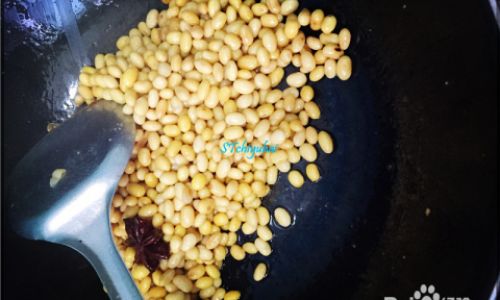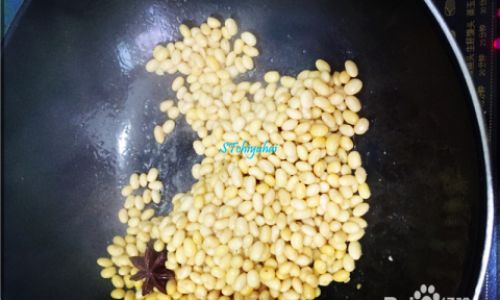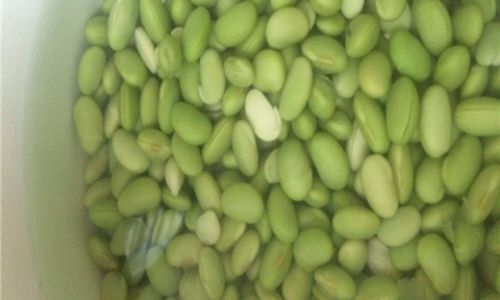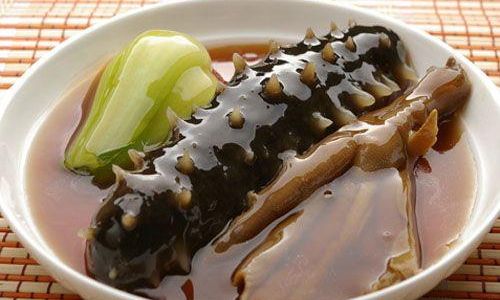Cooking fresh soybeans, also known as edamame, can be a delightful culinary experience that brings out their natural sweetness and nutty flavor. Whether you’re preparing them as a side dish, incorporating them into a salad, or using them in a soup, knowing how to cook fresh soybeans properly can elevate your meals to new heights. This comprehensive guide will walk you through the steps to cook fresh soybeans deliciously, ensuring they retain their nutritional value while delivering a mouthwatering taste.
Understanding Fresh Soybeans
Before diving into the cooking process, it’s essential to understand what fresh soybeans are and why they’re a valuable addition to your diet. Fresh soybeans, or edamame, are soybeans harvested while they are still green and tender, typically found in pods. They are a rich source of plant-based protein, fiber, vitamins, and minerals, making them an excellent choice for vegetarians and anyone seeking a nutritious diet.
When selecting fresh soybeans, look for pods that are bright green, firm, and free of bruises or discoloration. The beans inside should be plump and green, not shriveled or yellowing. Fresh soybeans have a slightly sweet and nutty flavor when cooked properly, making them versatile for various dishes.
Preparation Before Cooking
-
Rinsing and Sorting
Begin by rinsing the soybeans under cold running water to remove any dirt or debris. Carefully inspect the pods and discard any that are damaged or have discolored spots. Sorting through the pods ensures you only cook the freshest and best-quality beans. -
Removing the Pods (Optional)
Depending on your recipe or preference, you may choose to remove the beans from their pods before cooking. This step is optional but can make the beans easier to eat, especially if you’re serving them as a snack or appetizer. To remove the beans, gently snap the pods open along their seams and pop out the beans. Discard the pods or reserve them for composting.
-
Soaking (Not Always Necessary)
Unlike dried soybeans, which require soaking before cooking, fresh soybeans generally do not need soaking. However, if you prefer a softer texture or are planning to cook them for a longer period, soaking them in cold water for about 30 minutes can help. Just remember to drain and rinse them thoroughly after soaking.
Cooking Methods
There are several ways to cook fresh soybeans, each offering a slightly different texture and flavor. Here are some popular methods:
-
Boiling
Boiling is the most straightforward method for cooking fresh soybeans. It preserves their natural sweetness and nutty flavor while ensuring they are tender and ready to eat.Ingredients:

- Fresh soybeans (in pods or shelled)
- Water
- Salt (optional)
Instructions:
- Fill a large pot with enough water to fully submerge the soybeans. If you prefer, add a pinch of salt to the water.
- Bring the water to a rolling boil over high heat.
- Add the soybeans to the boiling water. If using shelled beans, reduce the cooking time slightly, as they will cook faster than beans still in their pods.
- Boil the soybeans for about 3-5 minutes if they are in pods or 2-3 minutes if they are shelled. Test for doneness by tasting one; they should be tender but still slightly firm.
- Once cooked, immediately drain the soybeans in a colander and rinse them with cold water to stop the cooking process and maintain their bright green color.
-
Steaming
Steaming fresh soybeans is a healthier alternative to boiling, as it preserves more of the nutrients and flavor.Ingredients:
- Fresh soybeans (in pods or shelled)
- Water for the steamer
Instructions:

- Set up a steamer basket in a pot with a tight-fitting lid. Add water to the pot, ensuring it does not touch the bottom of the steamer basket.
- Bring the water to a boil over high heat.
- Place the soybeans in the steamer basket, spreading them out in a single layer.
- Cover the pot and steam the soybeans for about 5-7 minutes if they are in pods or 3-5 minutes if they are shelled. Check for doneness by tasting one bean; they should be tender and slightly firm.
- Remove the steamer basket from the pot and let the soybeans cool slightly before serving.
-
Stir-Frying
Stir-frying fresh soybeans adds a bit of crunch and a touch of caramelization, enhancing their natural flavor.Ingredients:
- Fresh soybeans (shelled)
- 1-2 tablespoons of vegetable oil (such as canola or grapeseed oil)
- Garlic (minced, optional)
- Ginger (minced, optional)
- Salt and pepper to taste
- Soy sauce or tamari (optional, for added flavor)
Instructions:
- Heat the vegetable oil in a large skillet or wok over medium-high heat.
- If using, add the minced garlic and ginger to the hot oil and stir-fry for about 30 seconds until fragrant.
- Add the shelled soybeans to the skillet, spreading them out in a single layer.
- Stir-fry the soybeans for about 3-5 minutes, stirring frequently to prevent burning. They should turn a brighter green and develop a slight crunch.
- Season with salt and pepper to taste. If desired, add a splash of soy sauce or tamari to enhance the flavor.
- Stir well to combine and cook for an additional 1-2 minutes. Remove from heat and serve immediately.
-
Roasting
Roasting fresh soybeans brings out their nutty flavor and creates a delightful crunchy texture, making them perfect for snacks or salads.
Ingredients:
- Fresh soybeans (shelled)
- 1-2 tablespoons of olive oil or vegetable oil
- Salt and pepper to taste
- Optional seasonings (such as garlic powder, paprika, or cumin)
Instructions:
- Preheat your oven to 400°F (200°C).
- Spread the shelled soybeans in a single layer on a baking sheet.
- Drizzle the olive oil or vegetable oil over the soybeans and toss to coat evenly.
- Sprinkle with salt, pepper, and any optional seasonings.
- Roast in the preheated oven for about 10-15 minutes, stirring occasionally to ensure even cooking. The soybeans should turn golden brown and develop a crunchy texture.
- Remove from the oven and let them cool slightly before serving. They can be enjoyed as a snack or added to salads and other dishes.
Serving Suggestions
Fresh soybeans are incredibly versatile and can be enjoyed in various ways. Here are some serving suggestions to inspire your culinary creativity:
- As a Side Dish: Serve boiled or steamed soybeans as a simple yet nutritious side dish. Add a sprinkle of sea salt or a drizzle of extra virgin olive oil for added flavor.
- In Salads: Incorporate shelled soybeans into your favorite salads for added protein and crunch. They pair well with greens, vegetables, grains, and nuts.
- Soup and Stew Additions: Add shelled soybeans to soups and stews for a nutritious and hearty boost. They will absorb the flavors of the broth and add a delightful texture.
- Snacks and Appetizers: Roasted soybeans make an excellent snack or appetizer. Serve them with a dipping sauce, such as hummus, guacamole, or a spicy yogurt sauce.
- Stir-Fries and Grain Bowls: Stir-fried soybeans can be added to stir-fries, grain bowls, or Buddha bowls for a protein-packed and delicious addition.
Storage Tips
If you have leftover fresh soybeans, here’s how to store them properly:

- Refrigeration: Store cooked soybeans in an airtight container in the refrigerator for up to 3-4 days. They can be reheated in the microwave or on the stovetop until warm.
- Freezing: For longer storage, freeze cooked soybeans in an airtight container or freezer bag. They can be kept in the freezer for up to 6 months. To use, thaw overnight in the refrigerator or defrost in a bowl of cold water. Reheat as needed.
Conclusion
Cooking fresh soybeans deliciously is a straightforward process that requires minimal effort but yields maximum flavor and nutrition. Whether you prefer boiling, steaming, stir-frying, or roasting, these methods will help you bring out the best in your fresh soybeans. With their natural sweetness, nutty flavor, and versatility, fresh soybeans are a welcome addition to any meal. Experiment with different cooking techniques and serving suggestions to find your favorite way to enjoy this nutritious and delicious legume. Happy cooking!





0 comments